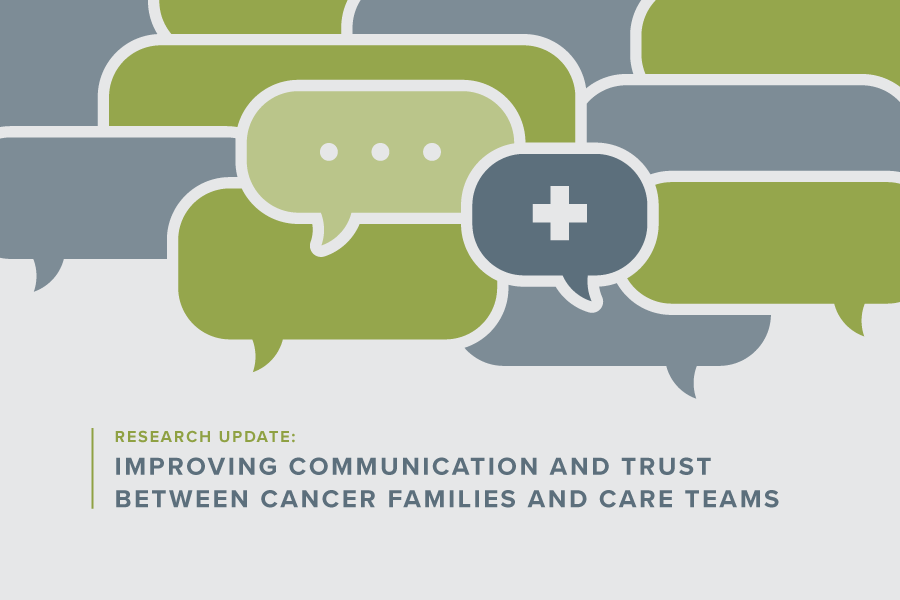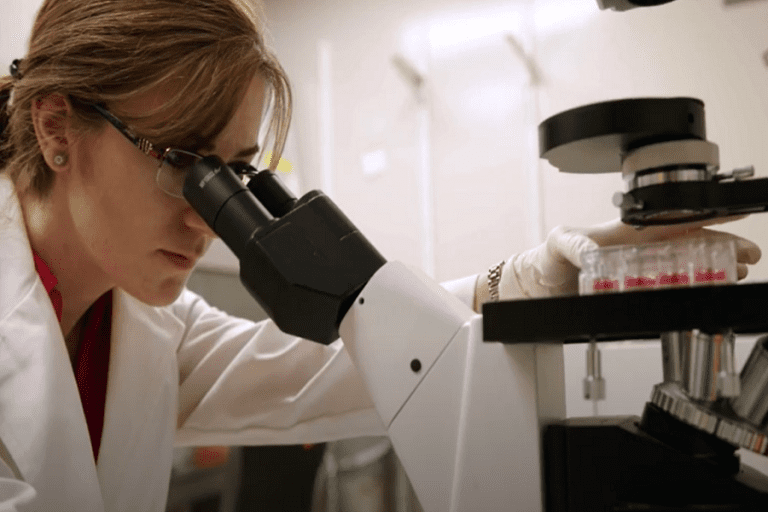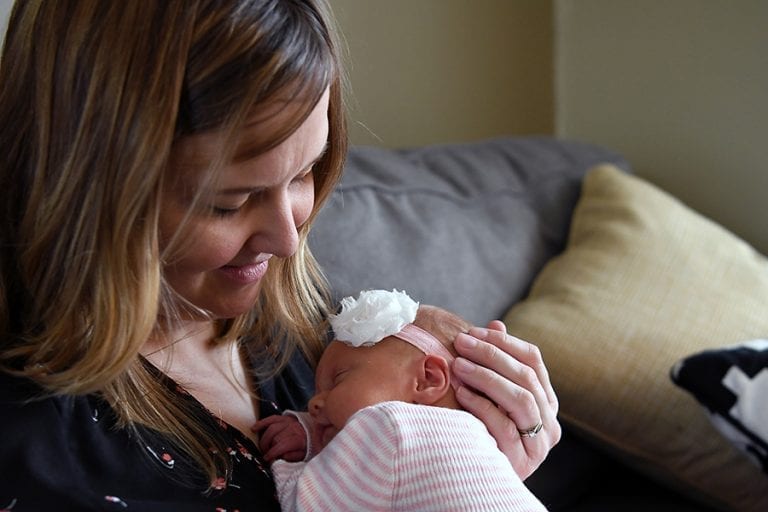Typically, clinical trials, treatments, and complicated medical terms come to mind when we think of childhood cancer research. But, Bryan Sisk, MD at Washington University in St. Louis looks at it from a unique and crucial perspective: through the lens of communication between families and clinicians.
“When communication functions go unfulfilled, parents can experience emotional distress, insufficient understanding, loss of trust, and even medical harm to the child,” he says.
In other words, communication breakdowns between patients, parents, doctors, nurses and other medical professionals could result in unnecessary stress and anxiety, or even decisions that could lead to physical harm. Communication is simply vital to positive childhood cancer outcomes.
Until now, no one has developed tools to measure the many aspects of communication in childhood cancer. Dr. Sisk is developing these measures, which will be the first of their kind.
“A lot excites me about this work, especially that we’re developing a measure for pediatric cancer from the perspective of people with experience in pediatric cancer,” Dr. Sisk says. “ It’s time that our population has something developed just for them.”
He and his team have already identified eight communication functions:
- Helping build relationships between families and clinicians
- Exchanging information with families
- Helping them make decisions
- Enabling self-management
- Managing their uncertainty
- Responding to their emotions
- Providing validation
- Supporting hope
His team developed these eight functions through interviews with 80 parents of children with cancer. From these interviews, his team identified how communication was central to high-quality care. His team also explored how poor communication affects families.
Feedback from parents on positive communication from his studies included:
“[Our doctor] would always tell us what was going on, but then he’d always tell us something positive. That meant a lot to me because I don’t always wanna hear all the bad things...I could take that hope and live for the next week.”
In a study on the impact of negative communication, Dr. Sisk found that nearly all parents experienced at least one negative instance in their journey with childhood cancer. For example, bereaved parents reported how a single insensitive encounter haunted them and complicated their grief even years later.
“When a child is seriously ill, high-quality communication has been associated with parental peace of mind, hopefulness, greater trust in physicians, and feelings of acknowledgment and comfort,” Dr. Sisk says in his recent paper.
Quality communication, however, is tougher to quantify and measure than typical scientific endeavors because families need different things and have varying communication styles.
“I was struck by how different communication needs are for any given patient or family,” Dr. Sisk says. “One young adult said, ‘I love that they asked what I thought, and the doctors included me.’ Another said, ‘I was so glad when doctors went to my parents instead of me.”
With CCRF funding, he plans to create surveys that measure these eight previously identified communication functions. He will build these surveys for adolescents and young adults (AYA) with cancer and their parents. He is building these surveys based on his functional model of communication. “It is reactive to the needs of a particular family,” he says.
For example, instead of a survey asking if “Doctors gave me all the information,” it would say, “Doctors gave me all the information that I wanted.”
Dr. Sisk chose AYA (age 12-24) to study because the population varies so much regarding independence and dependence on their parents. This will help the study garner a wide array of perspectives.
With robust communication tools and measures, Dr. Sisk says we can better assess the current state of communication in pediatric oncology, evaluate the effectiveness of communication interventions, and compare results across studies.
“The scale that we’re building will be an electronic survey given on a phone, computer or tablet. We will also develop a shorter version that can be used in real-time in a clinical setting. This will be a research tool, and in the future, we could work this into an ongoing communication feedback system,” he says.
Once made into a successful measure, it could be used to measure interventions. These interventions could include training clinicians on communication skills, building Apps that help families to communicate with their clinical team, or creating lists of important questions to raise during visits.
“If you’re measuring with the same tool, then we know if interventions are working and we can compare how well different interventions are working,” says Dr. Sisk. “That’s the grand scheme. How can we use this measure to make better comparisons and approaches in the future?”
So far, all medical professionals, parents, and patients he has spoken with have agreed that the model works and applies to everyday experiences.
“That gives me a lot of confidence that we’re developing this measure based on the right information,” Dr. Sisk says.
Your donation supports Emerging Scientists
By donating to Children’s Cancer Research Fund, you’re giving emerging scientists the support they need to put their great ideas into practice. Learn more about CCRF's commitment to funding researchers early in their careers.




